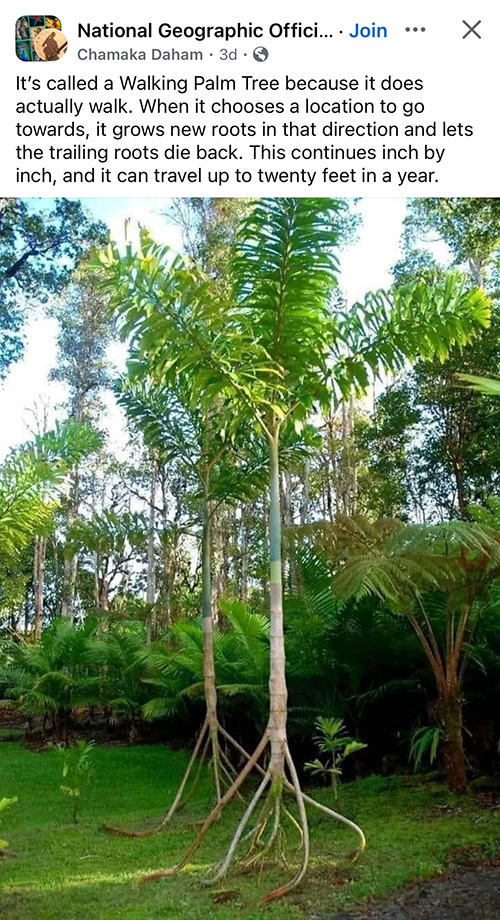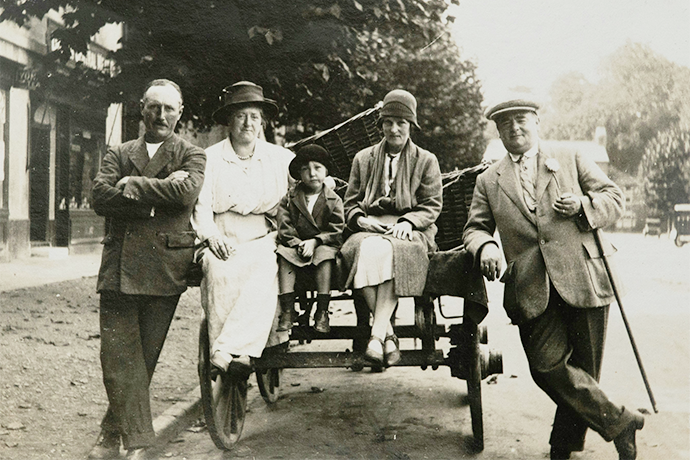Happy Wednesday! This week I’ve got a few hopefully interesting links. One discusses how many people it took for us to be alive. That yields some wild math that quickly exceeds the number of people who have ever been born. I also found more fun Scratch projects that help you explore its features. Plus STEM holiday gifts recommended by Wired, Good Housekeeping, and other publications (in case you don’t trust me). 🙂 And an interesting two part profile of a British computer science teacher talking about his experiences with autism and pursuing a career in computing. Oh, and a cute Dad joke to kick things off. Thank you for reading!
Ancestral Math
Parents often tell their kids they’re special. That’s wonderful, of course. However, if you stop to think about time scales and the universe we live in, maybe it’s true. Maybe we are special.
If you’ve come across writing by Carl Sagan from the 1970s, you’ve heard that we’re all made of the materials found in stars. The universe has existed longer than we can imagine. Meanwhile, our existence is measured in decades. And once we depart this world, the universe will continue to exist for billions more years. Time scales do make our momentary existence special.
But is there a way to find out how special our existence is? You might call this line of questioning ancestral math. To begin, let’s phrase the question this way: How many people does it take for you to have been born?

One article I found says the numbers in this meme actually is inaccurate, in two ways. One, going back 30 generations would yield a billion ancestors. Counting earlier generations yields a number greater than all the people alive ever. The more practical reason is called pedigree collapse: over many generations, one or more people in your family tree will show up in multiple parts of the tree.
Turns out, there’s no way to accurately count the number of people in your family tree going back more than a few generations. And while many people say each of us has beaten odds of 1 in 400 trillion by being born, that number also is an educated guess.
And how many people have been alive in all human history? The Population Reference Bureau (PRB) estimates that 117 billion humans have been born in human history. They have the chart to prove it, too.
For me, as a fan of historical photographs, the question I’m most interested in is, where did all their shoes go? 🙂 We should be overwhelmed with tens and hundreds of millions and maybe low billions of pairs of old shoes.
How Many People Did It Take For You To Exist?
https://youtu.be/JXSxXhnBW2Y
What’s Wrong with This Image? Explaining “Pedigree Collapse” and “Endogamy”
https://www.startresearching.com/blog/whats-wrong-with-this-image-explaining-pedigree-collapse
How Many People Have Ever Lived on Earth?
https://www.prb.org/articles/how-many-people-have-ever-lived-on-earth/
U.S. and World Population Clock – US Census Bureau
https://www.census.gov/popclock/
STEM Holiday Gifts: What Others Recommend
Since the fall of 2014, I’ve published an annual holiday STEM/STEAM gift guide. This fall, I’ve published gift ideas in my Wednesday emails. It’s that time of year again.
The past six Wednesday emails I’ve shared holiday STEM gift ideas. So far, books and magazines, secret codes, robots, electronics, board games, and apps. Today I want to share ideas from other trustworthy sources online.
While some of these are for 2023, products mostly remain the same year to year. The primary value of these links is to generate ideas. I don’t know every possible product, for example. These links might have additional ideas. For example, I’d love to include telescopes and binoculars for kids interested in astronomy and the night sky.
Wired Magazine’s Best STEM Toys 2023
https://www.wired.com/gallery/best-stem-toys-for-kids/
The 24 Best STEAM Toys for 2023
https://www.thespruce.com/best-stem-toys-4153604
36 Best STEM Toys for Kids, According to Engineers
https://www.goodhousekeeping.com/childrens-products/g5162/best-stem-toys/
Ten Engineer-Selected STEM Toys to Give as Gifts in 2023
https://www.smithsonianmag.com/innovation/ten-engineer-selected-stem-toys-to-give-as-gifts-in-2023-180983294/
16 STEM Toys Your Smarty-Pants Kids Will Love in 2024
https://www.cnet.com/gifts/stem-toys/
Best STEM Toys for 10 Year Olds in 2024
https://smartkidsplanet.com/collections/stem-toys-10-11-year-olds/ages-6-7?page=4
Top Space & Planets STEM Toys For Kids In 2024
https://smartkidsplanet.com/collections/top-space-planets-stem-toys-for-kids-in-2024
Best space toys and gifts for kids, 2024
https://www.skyatnightmagazine.com/top-astronomy-kit/space-astronomy-themed-gifts-for-kids
The 33 Best Space Gifts for the Astronomy Nerd in Your Life
https://www.popularmechanics.com/space/g25238672/space-gift-guide/
Scratch Projects
I’d like to share Scratch projects I found last week while writing about where to begin with Scratch. Instead of one or two beginner projects, here are links to a bunch of fun projects. Clicking through the links, many or most link to actual projects that you can tweak and play with. That’s the best way to learn any new programming language.
The Scratch website at MIT probably is the best place to begin learning. The other two sites are also selling classes. But it’s possible, as of this writing, to click through to Scratch projects and learn without signing up. Of course, you might find the sites worth diving deeper beyond reading and clicking links. That’s for you to decide.
Starter Projects – MIT
https://scratch.mit.edu/starter-projects
5 Fun Scratch Exercises for Kids in Grades 2-5
https://www.create-learn.us/blog/how-to-create-a-game-on-scratch/
https://www.create-learn.us/blog/scratch-exercises-for-kids/
https://www.create-learn.us/blog/make-catch-game-in-scratch/
https://www.create-learn.us/blog/how-to-make-a-sprite-jump-in-scratch/
Scratch Project Ideas for Kids and Beginners
https://www.codewizardshq.com/scratch-project-ideas/
Working in Computer Science with Autism
Stephen Parry is a British Computer Science teacher. He’s taught at the college level for 15 years and 20 years in the IT industry before teaching. The British publication, Computer Science 4 Fun, has an excellent two-part interview with Parry about how his autism diagnosis has helped and hurt him in his career.
If you have a kid who thinks differently, these articles are an interesting read. And if you’re not autistic or don’t have a kid on the spectrum, it’s helpful to know how people experience the world.
In my life experience, helping to raise my kids, it’s been a revelation about my own struggles. Mostly around executive function, the ability to organize activities into tasks and then complete them. But there’s also tactile issues sometimes that impacts eating and/or working with people. It’s broadened my view of people that I work with. It’s made me more accepting of differences in the world.
In any event, the Computer Science 4 Fun publication also has a number of good links about diversity and computing. You also might find them interesting.
Working in Computer Science: An Autistic Perspective
https://cs4fn.blog/2024/09/07/working-in-computer-science-an-autistic-perspective-part-1/
https://cs4fn.blog/2024/09/11/working-in-computer-science-an-autistic-perspective-part-2/
Diversity Computing by all, for all (Issue 29)
https://cs4fndownloads.wordpress.com/issue-29-diversity/
https://cs4fn.blog/diversity-issue29/
Diversity Day by Day (a calendar)
https://cs4fn.blog/diversity-day-by-day/
This Week
Our Sunday email this week will have fun often offbeat links. Ever wonder what the first color was in the universe? Not that anyone was anyone was around. Plus links about AI predicting crime based on watching real time video feeds, a star that’s closer to Earth than the Voyager spacecraft, Wi-Fi that apparently works at nine miles distance, how heatwaves triggers dementia, and more. Look for the email this Sunday.


